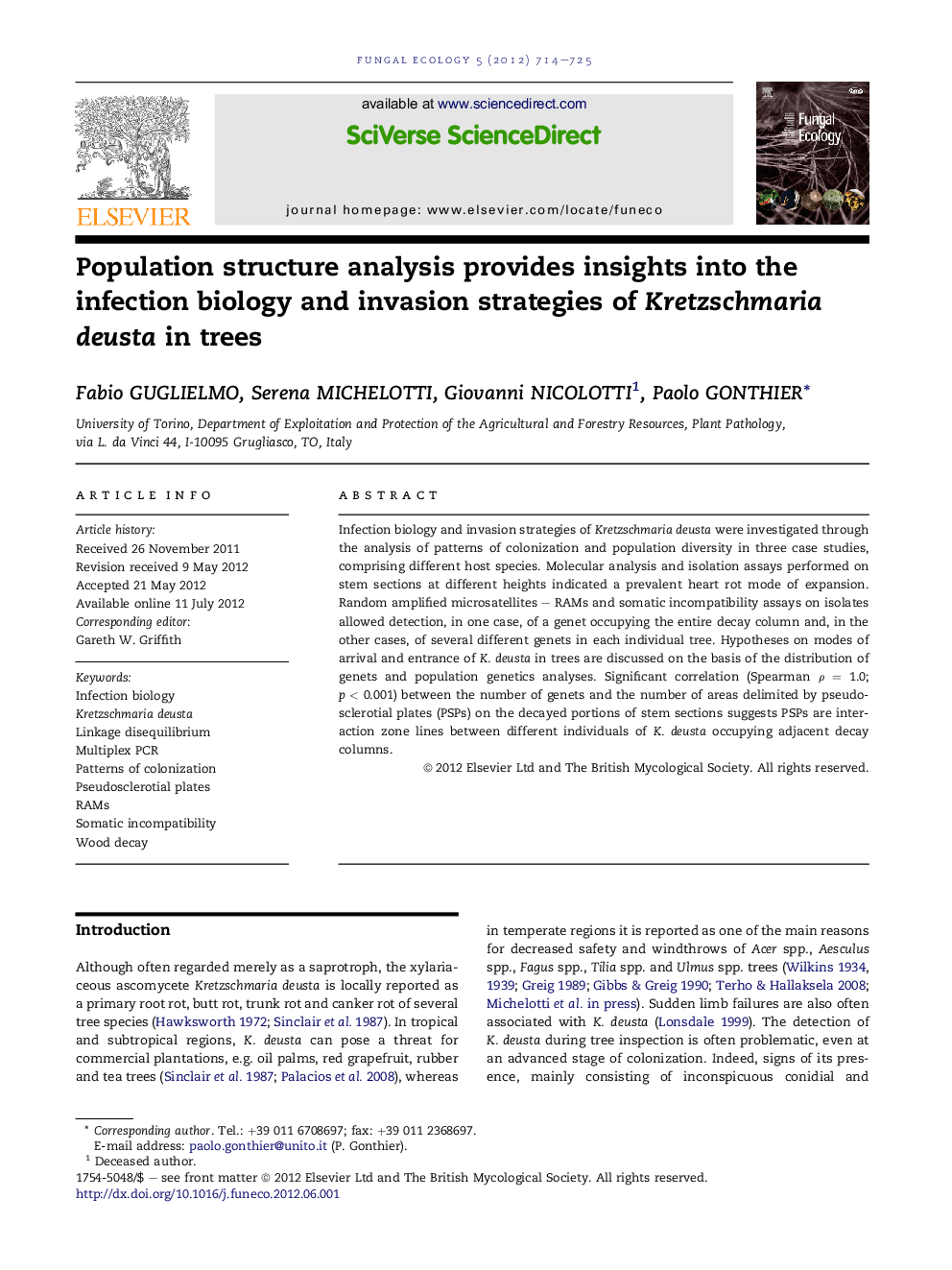| کد مقاله | کد نشریه | سال انتشار | مقاله انگلیسی | نسخه تمام متن |
|---|---|---|---|---|
| 2053656 | 1075506 | 2012 | 12 صفحه PDF | دانلود رایگان |

Infection biology and invasion strategies of Kretzschmaria deusta were investigated through the analysis of patterns of colonization and population diversity in three case studies, comprising different host species. Molecular analysis and isolation assays performed on stem sections at different heights indicated a prevalent heart rot mode of expansion. Random amplified microsatellites – RAMs and somatic incompatibility assays on isolates allowed detection, in one case, of a genet occupying the entire decay column and, in the other cases, of several different genets in each individual tree. Hypotheses on modes of arrival and entrance of K. deusta in trees are discussed on the basis of the distribution of genets and population genetics analyses. Significant correlation (Spearman ρ = 1.0; p < 0.001) between the number of genets and the number of areas delimited by pseudosclerotial plates (PSPs) on the decayed portions of stem sections suggests PSPs are interaction zone lines between different individuals of K. deusta occupying adjacent decay columns.
► Kretzschmaria deusta has a heart rot mode of establishment in beech, maple and plane trees.
► Kretzschmaria deusta may infect trees via airborne spores through wounds, as suggested by the population structure analysis.
► Pseudosclerotial plates can be the result of interaction among different individuals of Kretzschmaria deusta.
Journal: Fungal Ecology - Volume 5, Issue 6, December 2012, Pages 714–725